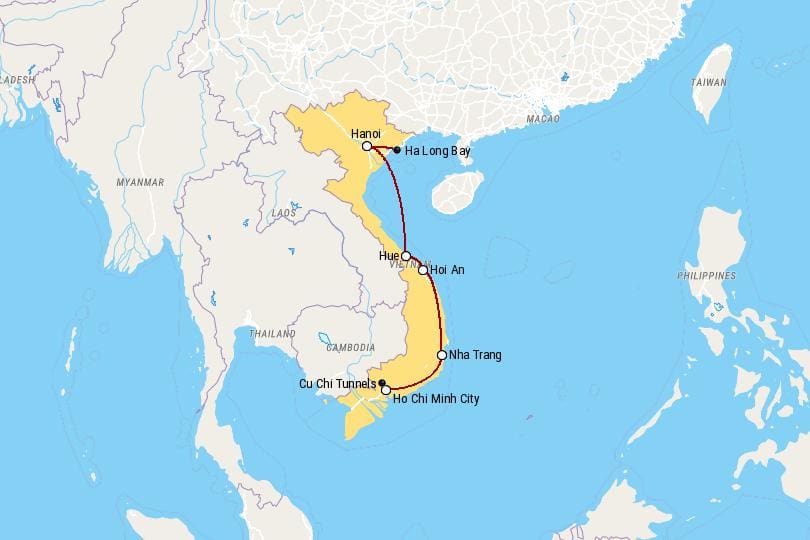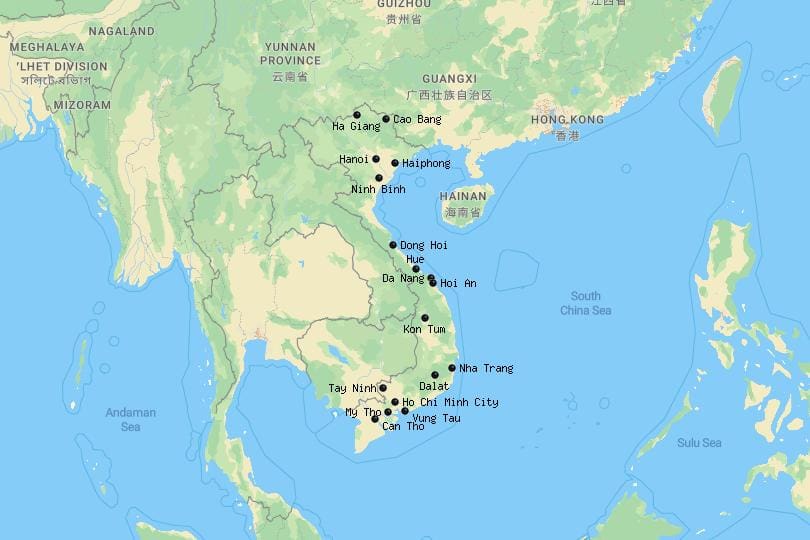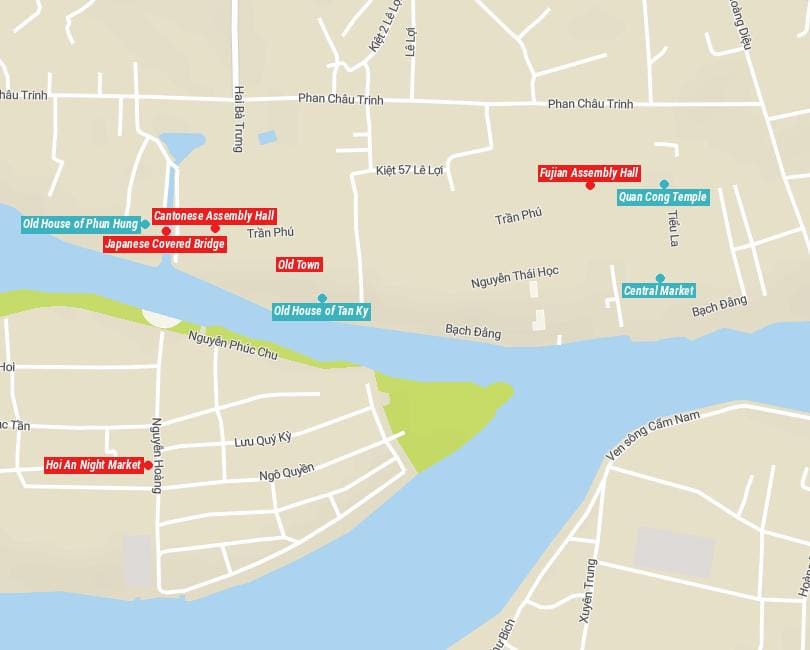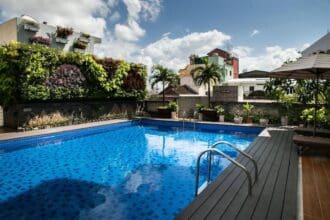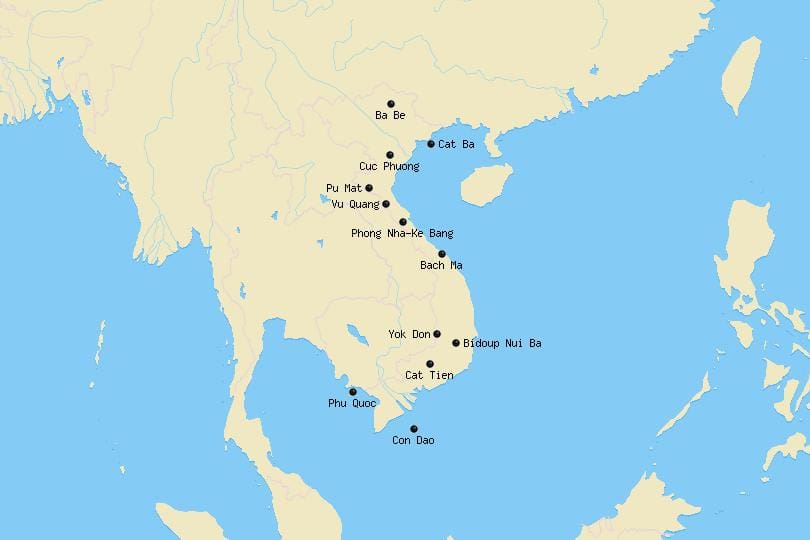Vietnam is a country that captivates travelers with its rich history, vibrant culture, stunning landscapes, and mouthwatering cuisine. Whether you’re a first-time visitor or returning for another adventure, Spend 2 Weeks in Vietnam offers the perfect balance of exploration and relaxation. In this comprehensive guide, we’ll walk you through an ideal 14-day itinerary that covers the must-see destinations, hidden gems, and unforgettable experiences. From bustling cities to serene countryside, this plan ensures you make the most of your time in this Southeast Asian gem.
Why Vietnam Should Be Your Next Travel Destination
Before diving into the details of your two-week journey, let’s explore why Vietnam deserves a spot on your travel bucket list. With its diverse landscapes, from lush rice paddies to pristine beaches, Vietnam offers something for every type of traveler. Its unique blend of ancient traditions and modern innovations creates a dynamic atmosphere that keeps visitors coming back for more.
Vietnam’s affordability is another major draw. You can enjoy luxurious accommodations, delicious meals, and exciting activities without breaking the bank. Additionally, the warmth and hospitality of the Vietnamese people add an extra layer of charm to your trip. Whether you’re seeking adventure, cultural immersion, or simply a place to unwind, Vietnam has it all.
Day 1-3: Hanoi – A Vibrant Start to Your Journey
Exploring the Heart of Vietnam
Your journey begins in Hanoi , Vietnam’s capital city. Known for its chaotic yet charming streets, Hanoi is a melting pot of history, culture, and culinary delights. As soon as you step foot in the city, you’ll be greeted by the hum of motorbikes, the aroma of street food, and the sight of colonial architecture juxtaposed with modern buildings.
Top Attractions in Hanoi
- Hoan Kiem Lake : Start your day with a peaceful stroll around this iconic lake. Legend has it that Emperor Ly Thai To returned a magical sword to the Golden Turtle God here. The lake is surrounded by lush greenery and is a popular spot for locals to practice tai chi in the early morning.
- Old Quarter : Dive into the heart of Hanoi’s bustling streets. This area is famous for its narrow lanes, each named after a specific trade, such as silk or silver. The Old Quarter is a maze of shops, cafes, and street food vendors, offering a sensory overload that’s both exhilarating and overwhelming in the best way possible.
- Temple of Literature : Pay homage to Vietnam’s first university, a serene complex dedicated to Confucius and scholars. Built in 1070, this temple is a testament to Vietnam’s long-standing respect for education and intellectual pursuits. The gardens are particularly beautiful, providing a tranquil escape from the city’s hustle and bustle.
- Ho Chi Minh Mausoleum : Visit the final resting place of Vietnam’s revolutionary leader, Ho Chi Minh. The mausoleum is an imposing structure where visitors can pay their respects. Note that there are strict dress codes and photography restrictions inside.
- West Lake : For a more relaxed experience, head to West Lake, the largest lake in Hanoi. Here, you can rent a bike and cycle along the waterfront, stopping at cafes and temples along the way. The area is also home to several upscale restaurants and bars, making it a great spot for a leisurely evening.
Culinary Delights in Hanoi
No visit to Hanoi is complete without indulging in its world-famous street food. Try pho , a flavorful noodle soup that’s considered Vietnam’s national dish. Each bowl is a symphony of flavors, combining tender beef or chicken, fresh herbs, and a rich broth that’s simmered for hours. Another must-try is banh mi , a crispy baguette filled with savory ingredients like pork, pate, pickled vegetables, and cilantro.
For a truly local experience, head to a night market where vendors serve up everything from grilled meats to fresh fruit smoothies. The Dong Xuan Market is one of the largest in Hanoi, offering a wide variety of goods, from clothing to souvenirs. If you’re feeling adventurous, try some of the more unusual street foods like fried insects or snails.
Travel Tip: Avoid peak hours when visiting popular attractions like Hoan Kiem Lake and the Old Quarter. Early mornings or late afternoons are ideal for beating the crowds. Additionally, always carry small denominations of Vietnamese Dong (VND) for tipping and small purchases.
Day 4-5: Ha Long Bay – A Natural Wonder
Cruising Through Emerald Waters
After soaking up the energy of Hanoi, it’s time to escape to the tranquil beauty of Ha Long Bay , a UNESCO World Heritage Site. This breathtaking destination is renowned for its emerald waters and towering limestone karsts. The bay spans over 1,500 square kilometers and is dotted with nearly 2,000 islands, each with its own unique shape and story.
Activities in Ha Long Bay
- Overnight Cruise : One of the best ways to experience Ha Long Bay is by booking an overnight cruise. These luxury junk boats offer a range of amenities, from spacious cabins to gourmet dining. Many cruises include stops at secluded caves, floating villages, and pristine beaches, allowing you to explore the bay at your own pace.
- Kayaking : For a more hands-on experience, consider kayaking through the bay’s hidden lagoons and coves. Paddling through the calm waters gives you a chance to get up close to the dramatic rock formations and observe the bay’s rich marine life.
- Titop Island : Named after a Russian astronaut who visited during the Vietnam War, Titop Island is a popular stop on many cruises. Climb to the summit for panoramic views of the bay or relax on its sandy shores. The island also features a natural swimming pool, perfect for cooling off after a day of exploration.
- Sung Sot Cave : Also known as Surprise Cave, this massive grotto is one of the largest in Ha Long Bay. Inside, you’ll find impressive stalactites and stalagmites that have formed over millions of years. The cave’s chambers are illuminated by soft lighting, creating an otherworldly atmosphere.
What Makes Ha Long Bay Special?
The sheer scale and beauty of Ha Long Bay are awe-inspiring. Each island seems to tell a story, shaped over millions of years by wind and water. As the sun sets, the sky transforms into a canvas of fiery hues, reflecting off the calm waters below. The bay’s ethereal beauty has inspired countless legends and myths, adding to its mystique.
Travel Tip: When booking a cruise, opt for a reputable company that prioritizes sustainability and responsible tourism. Many operators now offer eco-friendly tours that minimize environmental impact while maximizing guest comfort.
Day 6-7: Hoi An – A Step Back in Time
Discovering Ancient Charm
Next, head south to Hoi An , a picturesque town that feels frozen in time. Its well-preserved architecture, lantern-lit streets, and riverside setting make it one of Vietnam’s most enchanting destinations. Designated as a UNESCO World Heritage Site, Hoi An is a living museum that showcases the country’s rich cultural heritage.
Must-See Spots in Hoi An
- Japanese Covered Bridge : Admire this iconic symbol of Hoi An, built by Japanese merchants in the 16th century. The bridge connects the Japanese and Chinese quarters of the town and is adorned with intricate carvings and statues.
- Ancient Houses : Explore traditional homes turned museums, offering insights into the lives of past residents. The Tan Ky House and Phung Hung House are two notable examples, featuring a mix of Japanese, Chinese, and Vietnamese architectural styles.
- An Bang Beach : After exploring the town, spend a relaxing afternoon soaking up the sun on this beautiful stretch of sand. An Bang Beach is less crowded than nearby Cua Dai Beach, making it an ideal spot for unwinding.
- Thu Bon River : Take a sunset boat ride along the Thu Bon River, which runs through the heart of Hoi An. The river is lined with fishing boats and traditional wooden houses, creating a picturesque backdrop for photos.
Tailor-Made Experiences
One of Hoi An’s highlights is its thriving tailoring industry. Visit a local shop to have custom-made clothing created just for you, from silk dresses to leather jackets. The process typically takes 24-48 hours, so plan accordingly if you want to take advantage of this unique opportunity.
Travel Tip: Visit Hoi An during the full moon festival when the entire town is illuminated by colorful lanterns, creating a magical ambiance. Streets are closed to traffic, and locals gather to celebrate with music, dance, and traditional games.
Day 8-9: Da Nang – Modern Meets Nature
A City of Contrasts
From Hoi An, take a short drive to Da Nang , a rapidly growing city known for its impressive infrastructure and natural wonders. Here, you’ll find a harmonious blend of urban sophistication and outdoor adventure.
Highlights of Da Nang
- Marble Mountains : These five limestone hills are dotted with caves, pagodas, and panoramic viewpoints. Each mountain is named after one of the five elements—metal, wood, water, fire, and earth—and offers a unique experience. Climb to the top for sweeping views of the surrounding landscape.
- Dragon Bridge : Watch the dragon-shaped bridge breathe fire and water every weekend evening. This iconic landmark is a symbol of Da Nang’s modernity and innovation.
- Son Tra Peninsula : Escape the city and hike through lush forests to reach secluded beaches. The peninsula is also home to the Linh Ung Pagoda, which houses a towering statue of Guanyin, the Goddess of Mercy.
Food Scene in Da Nang
Da Nang boasts a thriving food scene, with specialties like mi quang (turmeric noodles) and banh xeo (crispy pancakes). Street food stalls and upscale restaurants alike cater to all tastes and budgets. For a memorable dining experience, visit the Han Market, where you can sample a variety of local dishes under one roof.
Travel Tip: Rent a scooter to explore Da Nang and its surroundings. Scooters are affordable and provide the flexibility to discover hidden gems off the beaten path.
Day 10-11: Hue – A Royal Retreat
Immersing in Imperial History
Continue your journey north to Hue , the former imperial capital of Vietnam. This historic city is steeped in royal heritage, making it a fascinating destination for history buffs. Hue played a pivotal role in Vietnam’s past, serving as the seat of power for the Nguyen Dynasty from 1802 to 1945.
Key Sites in Hue
- Imperial Citadel : Wander through the sprawling grounds of this ancient fortress, once home to Vietnam’s emperors. The citadel is divided into three main sections—the Forbidden Purple City, the Imperial Enclosure, and the Outer Court—each with its own significance.
- Thien Mu Pagoda : Visit this iconic seven-story pagoda overlooking the Perfume River. Built in 1601, the pagoda is a symbol of Hue’s spiritual and cultural heritage.
- Royal Tombs : Explore the elaborate burial sites of Nguyen Dynasty rulers, including the tombs of Minh Mang, Tu Duc, and Khai Dinh. Each tomb reflects the personality and achievements of its respective emperor, with intricate carvings and lush gardens.
Cultural Insights
Hue is also known for its refined cuisine, which reflects the elegance of the royal court. Don’t miss out on dishes like bun bo hue , a spicy beef noodle soup, and com hen , clams served with rice. The city’s food culture emphasizes balance and harmony, using fresh ingredients and delicate flavors.
Travel Tip: Hire a local guide to gain deeper insights into Hue’s history and culture. Guides can provide context and stories that bring the city’s landmarks to life.
Day 12-13: Ho Chi Minh City – A Bustling Metropolis
Experiencing Urban Energy
End your trip in Ho Chi Minh City , formerly Saigon, a vibrant metropolis that pulses with life. From skyscrapers to street markets, this city offers endless opportunities for exploration. Ho Chi Minh City is a melting pot of old and new, where colonial architecture stands alongside modern developments.
Top Things to Do in Ho Chi Minh City
- War Remnants Museum : Gain insight into Vietnam’s turbulent history through powerful exhibits. The museum houses artifacts, photographs, and documents related to the Vietnam War, providing a sobering reminder of the conflict’s impact.
- Notre-Dame Cathedral Basilica : Marvel at this striking example of French colonial architecture. Constructed between 1863 and 1880, the cathedral is made entirely of materials imported from France.
- Ben Thanh Market : Shop for souvenirs, spices, and handicrafts while sampling local snacks. The market is a hub of activity, with vendors selling everything from fresh produce to handmade crafts.
- Bitexco Financial Tower : For panoramic views of the city, head to the Skydeck on the 49th floor of this iconic skyscraper. On clear days, you can see as far as the Saigon River and beyond.
Day Trips from Ho Chi Minh City
Consider taking a day trip to the Cu Chi Tunnels , an extensive underground network used during the Vietnam War. Alternatively, visit the Mekong Delta to cruise along winding waterways and experience rural life. Both excursions offer a glimpse into Vietnam’s past and present, complementing your urban adventures.
Travel Tip: Use Grab, a ride-hailing app similar to Uber, to navigate Ho Chi Minh City efficiently. Traffic can be chaotic, so having a reliable mode of transportation is essential.
Day 14: Departure – Reflecting on Your Adventure
As your two-week journey comes to an end, take a moment to reflect on the incredible experiences you’ve had. From the bustling streets of Hanoi to the tranquil waters of Ha Long Bay, Vietnam has undoubtedly left a lasting impression. Whether you’re cruising through emerald waters, wandering through lantern-lit streets, or savoring street food in vibrant markets, every moment will leave you yearning for more.
Travel Tips for Visiting Vietnam – Spend 2 Weeks in Vietnam
- Currency : Use Vietnamese Dong (VND) for transactions. ATMs are widely available, but carry cash for smaller establishments.
- Transportation : Opt for Grab (similar to Uber) for affordable rides within cities.
- Weather : Vietnam’s climate varies by region. Research the best time to visit based on your preferences.
- Etiquette : Dress modestly when visiting temples and remove shoes before entering homes.
- Health : Drink bottled or filtered water to avoid health risks. Carry a basic first aid kit for minor ailments.
- Language : Learn a few key phrases in Vietnamese, such as “xin chào” (hello) and “cảm ơn” (thank you), to enhance interactions with locals.
- Safety : Keep valuables secure and be mindful of your surroundings, especially in crowded areas.
Other Tourist Attractions Worth Exploring
While our itinerary focuses on key destinations, consider adding these spots if you have extra time:
- Sapa : Known for its terraced rice fields and ethnic minority villages, Sapa offers stunning trekking opportunities.
- Phong Nha-Ke Bang National Park : Home to some of the world’s largest caves, including Son Doong Cave, this park is a paradise for adventure seekers.
- Nha Trang : A coastal city famous for its white-sand beaches and vibrant nightlife.
- Dalat : A cool highland retreat with French colonial villas, flower gardens, and waterfalls.
- Con Dao Islands : A remote archipelago offering pristine beaches and excellent diving spots.
Conclusion
Vietnam is a destination that promises adventure, culture, and unforgettable memories. By following this carefully crafted 14-day itinerary , you’ll experience the best of what the country has to offer. Whether you’re cruising through Ha Long Bay, wandering through Hoi An’s lantern-lit streets, or savoring street food in Ho Chi Minh City, every moment will leave you yearning for more.
FAQs About Spend 2 Weeks in Vietnam
- What is the best time to visit Vietnam?
- The dry season (November to April) is ideal for traveling across the country.
- Is Vietnam safe for tourists?
- Yes, Vietnam is generally safe, but always exercise caution and keep valuables secure.
- Do I need a visa to enter Vietnam?
- Most travelers require a visa, which can be obtained online or upon arrival.
- How much money should I budget for two weeks in Vietnam?
- Budget travelers can expect to spend $30-$50 per day, while mid-range travelers may spend $70-$100 daily.
- What languages are spoken in Vietnam?
- Vietnamese is the official language, but English is commonly spoken in tourist areas.
- Can I drink tap water in Vietnam?
- No, stick to bottled or filtered water to avoid health risks.
- What should I pack for Vietnam?
- Lightweight clothing, comfortable shoes, sunscreen, and insect repellent are essential.
- Are credit cards accepted in Vietnam?
- Major hotels and restaurants accept cards, but cash is preferred for smaller purchases.
- How do I get around Vietnam?
- Domestic flights, trains, buses, and private transfers are common modes of transportation.
- What vaccinations do I need for Vietnam?
- Consult your doctor about hepatitis A, typhoid, and other recommended vaccines.

